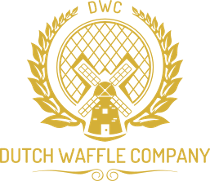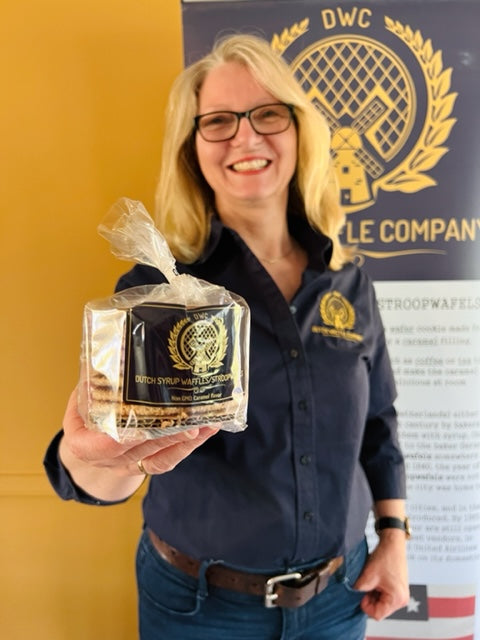The Netherlands may be known for its windmills and tulip fields, but there's a hidden gem waiting to be discovered: its cuisine! Dutch food offers a mix of hearty comfort dishes, sweet treats, and international influences. Today, we're taking a deep dive into five iconic Dutch dishes that will leave you wanting more. From stews to fluffy pancakes, get ready to discover the hidden gems of Dutch cuisine and a taste adventure you won't soon forget!
5 Dutch foods we'll cover
Eating habits & social norms
Before we get into the dishes, let’s talk a bit about the eating culture of the Netherlands and how this affects the eating habits. Dutch eating culture emphasizes practicality and simplicity. Breakfast and lunch are often straightforward meals, typically consisting of bread with cheese, cold cuts, or sweet spreads. Dairy products like yogurt and milk are also common. A typical Dutch breakfast includes bread with butter and hagelslag (chocolate springles), cheese, or jam, while a quick lunch often involves a sandwich or a salad. A popular lunch item is the ‘broodje,’ a sandwich filled with various ingredients. Dinner is the main meal of the day, usually enjoyed early in the evening around 6 PM. This meal is often a family affair, typically consisting of a meat or fish dish, potatoes, and vegetables. The Dutch also enjoy international cuisines, with Italian, Asian, and Mediterranean dishes frequently appearing on dinner tables.
The Dutch have a relaxed approach to dining. Meals are often seen as an opportunity to connect with family and friends, reflecting the importance of social bonds in Dutch culture.
Now that you’re familiar with Dutch eating habits and culture, let’s get into our list of traditional foods. Starting with… stamppot!
1. Stamppot

Stamppot hutspot: A stamppot with carrots, potatoes and sausages (rookworst)
Let's kick off the list with a dish that perfectly embodies the spirit of Dutch comfort food: Stamppot (pronounced "STAHM-pot"). Literally translating to "mash pot," stamppot is a hearty combination of mashed potatoes, mixed with various seasonal vegetables. It is traditionally served with a generous portion of rookworst (smoked sausage). This sausage adds a smoky depth and a satisfying protein punch to the creamy potato base. But don't be afraid to experiment! Stamppot is a versatile dish, and some variations might include bacon, meatballs, or even grilled chicken.
History of stamppot
The origins of stamppot can be traced back to the 16th century, when potatoes were introduced to Europe from the Americas. Initially regarded as food for livestock, potatoes gradually became a staple in European diets, including in the Netherlands. Stamppot evolved as a practical and filling dish, particularly for rural communities, blending readily available ingredients like potatoes, vegetables, and sometimes meat.
Stamppotavond
During the winter months, stamppot gatherings (stamppotavonden) are a common social tradition, bringing friends and family together around a steaming pot of mashed goodness. This communal aspect underscores stamppot's role in fostering gezelligheid—the cozy, convivial atmosphere that defines Dutch hospitality.
Variations and modern twists
While traditional stamppot recipes endure, modern variations cater to diverse tastes and dietary preferences:
- Vegan and Vegetarian Stamppot: Using plant-based ingredients like vegan sausage or omitting meat entirely.
- Regional Varieties: Each region in the Netherlands may have its own twist on stamppot, incorporating local ingredients or cultural influences.
- Creative Additions: Experimenting with herbs, cheeses, or unconventional vegetables to enhance flavor and texture.
2. Bitterballen

Dutch bitterballen
Next up on our list are bitterballen (pronounced "BIT-er-bal-len"). Bitterballen, one of the most beloved and quintessential Dutch snacks, holds a special place in the hearts of locals and tourists alike. These deep-fried, savory meatballs are typically served as a bar snack or an appetizer, often enjoyed with a cold beer. Their crispy exterior and creamy, flavorful filling make them irresistible.
History of Bitterballen
The origins of bitterballen can be traced back to the early 20th century, evolving from the traditional Dutch dish called ragout, a thick stew made from meat and vegetables. Bitterballen were created as a way to use up leftover ragout, rolling it into balls, coating them in breadcrumbs, and frying them to perfection. The name bitterballen is derived from "bitter," referring to the alcoholic beverages typically consumed alongside these snacks, and "ballen," meaning balls.
Ingredients and preparation
The magic of bitterballen comes alive in the four-step coating process:
- Meat: Typically, beef or veal is used, though variations with chicken, pork, or even vegetarian options are available.
- Flour: The filling is dusted with flour, ensuring a perfect base for the next steps.
- Egg Wash: Next comes a dip in a beaten egg mixture, creating a glue-like layer that helps the breadcrumbs adhere.
- Breadcrumbs: Finally, the bitterballen are coated in a generous layer of breadcrumbs, giving them their signature golden-brown crunch after frying.
Don't burn your mouth
Despite having burned my mouth more times than I care to admit, I still highly recommend indulging in this delicious snack when you visit the Netherlands. If you're feeling adventurous and want to try making them yourself, there are plenty of great recipes available online. Whether you enjoy them in a cozy Dutch pub or whip up a batch in your own kitchen, trying bitterballen is an absolute must for any food lover seeking a taste of authentic Dutch food.
3. Pannenkoeken

Dutch pancakes are often prepared as a family activity
Allow me to take a leap from savory delights to sweet sensations with our next Dutch treasure: Pannenkoeken (pronounced "pan-nen-KOH-ken"). Often mistaken for their American counterparts, pannenkoeken are a unique and delightful treat that deserves a place in your breakfast (or anytime!) repertoire.
A large, thin pancake, almost crepe-like in its delicacy, yet boasting a satisfyingly eggy flavor. Unlike their American cousins, pannenkoeken are typically much larger, spanning the entire width of the pan, and significantly thinner. This allows them to be more versatile, acting as a canvas for both sweet and savory toppings.
The beauty of pannenkoeken lies in their simplicity. Made with a basic batter of flour, eggs, milk, and a pinch of salt, they rely on fresh ingredients to shine. Traditionally, Dutch households used buckwheat flour in their pannenkoeken batter, giving them a slightly nutty flavor. However, all-purpose flour is now more common, resulting in a lighter and slightly sweeter pancake.
Birthday pannenkoeken
They are enjoyed year-round, from casual family dinners to festive celebrations like birthdays or festivals. The tradition of making and eating pannenkoeken spans generations, embodying the Dutch values of simplicity, quality ingredients, and conviviality. It's a common tradition for Dutch children to choose pannenkoeken as their birthday treat. In the tiny country, there are over 400 restaurants dedicated exclusively to serving pannenkoeken.
Toppings
Pannenkoeken are incredibly versatile and can be served with a variety of sweet or savory toppings:
- Sweet Toppings: Popular choices include powdered sugar, syrup (stroop), fresh fruits, whipped cream, and chocolate spread.
- Savory Toppings: Options range from cheese, bacon (spek), ham (ham), to vegetables like mushrooms or spinach.
4. Stroopwafel

Dutch stroopwafels
This list wouldn't be complete without delving into the world of stroopwafels (pronounced "STROWP-waf-els"). This iconic treat is a symphony of textures and flavors, guaranteed to satisfy your sweet tooth.
Two thin, crispy waffle cookies, held together by a warm, gooey center of caramel syrup. That's the essence of a stroopwafel. The waffle itself is light and slightly sweet, providing the perfect contrast to the rich and decadent caramel filling.
Stroopwafels are a sensory experience. The satisfying crunch of the waffle, the warm and gooey caramel, and the delightful aroma all combine to create a truly memorable moment.
Stroopwafel variations
Beyond the classic stroopwafel flavor the Dutch all know and love, the world of stroopwafels offers a surprise for every taste. For those seeking a more indulgent experience, rich chocolate over the top adds a decadent touch. Vegan stroopwafels allow everyone to enjoy the experience, with plant-based ingredients that don't compromise on flavor. And for those with gluten sensitivities, there are even gluten-free stroopwafels that capture the same delightful texture and taste.
Stroopwafel pie crust
Stroopwafels aren't just for snacking! Their magic can be extended to delightful desserts. Imagine a decadent pie filled with your favorite ingredients, but with a twist – a flaky pie crust made from crushed stroopwafels! The subtle sweetness and caramelly notes from the stroopwafel crust add a unique dimension to any pie recipe.
5. Poffertjes

Let's wrap up our list of traditional Dutch food with a delightful miniature treat: Poffertjes (pronounced "POF-ur-tjes"). Like their big brother pannenkoeken, these adorable bite-sized pancakes are a national treasure in the Netherlands.
Fluffy little pancakes, about the size of a large marble, boasting a golden brown exterior and a light and airy interior. Unlike their larger pancake cousins, poffertjes are made with a yeasted batter, giving them their signature rise and fluffy texture. Traditionally, the batter incorporates both all-purpose flour and buckwheat flour, lending a hint of nuttiness to the flavor profile.
Toppings and serving tips
- Sweet: The classic way to enjoy poffertjes is dusted with powdered sugar and drizzled with melted butter. This simple combination allows the natural sweetness of the pancakes to shine through.
- Fruity: Fresh berries or sliced fruit like apples or bananas add a refreshing and colorful twist to these fluffy delights.
- Syrupy: Don't be afraid to experiment with different syrups! From maple syrup to Dutch favorites like stroop (a molasses-like syrup) or appelstroop (apple syrup), the possibilities are endless.
- Chocolate: For a real treat, drizzle your poffertjes with melted chocolate or Nutella. The rich chocolate pairs beautifully with the fluffy pancakes for a truly indulgent experience.
Make sure to check out our delicious poffertjes recipe to try this Dutch treat!
A culinary adventure
Dutch food often gets a bad reputation, unfairly overshadowed by misconceptions and stereotypes. Critics may dismiss it as bland or unexciting, but the reality is quite different. Dutch food offers a rich variety of flavors and regional specialties that reflect its history, geography, and cultural influences.
So, the next time you're planning a culinary adventure, consider venturing beyond the familiar and try some of our traditional Dutch cuisine. You might just discover your new favorite dish or rediscover the joy of simple, flavorful food.
Bon appétit, or as the Dutch say, eet smakelijk!




